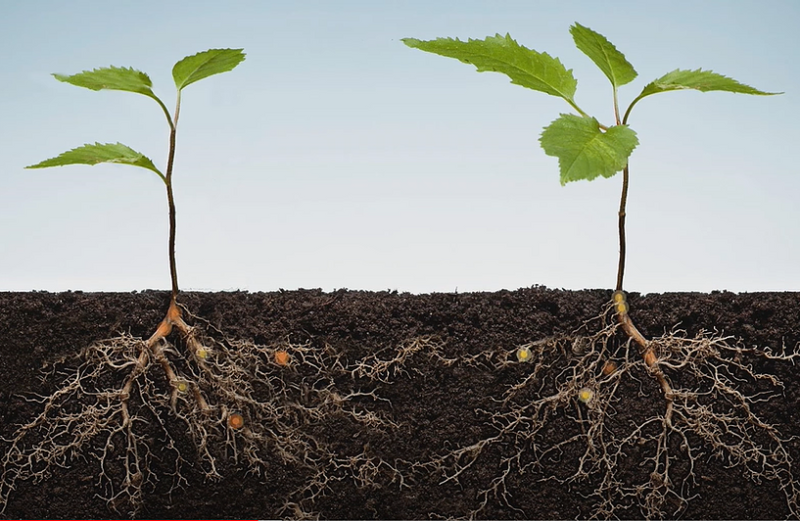How plants communicate and the role of mycorrhizal fungi.
Most of us view plants not as a living organism that thinks, feels and reacts, but more like an object such as a table. When we chop down that tree or prune that tomato plant we don’t think of hurting a living being. Science has found that plants are dynamic. They react to external and internal stressors – and they communicate with each other.
Can Tomatoes Scream?
A tomato study conducted by a team of scientists at Tel Aviv University showed that tomatoes emit a high frequency distress sound – in other words – they scream when they are stressed by drought or physical damage.
Tomato plants that were drought-stressed emitted about 35 ultrasonic squeals per hour, while those that had their stems cut made about 25. The average number of sounds emitted by healthy plants was less than one per hour.
Why do they “scream” – do they feel “hurt”? We don’t know as we haven’t decoded their “language” yet.
Can Plants Communicate with Each Other?
Until recently, because plants don’t have a voice box, the common belief was that plants do not have the ability to communicate. Science has revealed however, that that assumption is just not true. They communicate by other means.
Electrical Signals as a Form of Communication Between Tomato Plants & Mycorrhizal Fungi
Scientists, in that same tomato study, have found that tomatoes transmit electrical signals between neighbouring tomato plants.
Each plant generates electrical signals in their cells, and they communicate with each other by passing these electrical signals through the underground network of their hidden partner: mycorrhizal fungi.
Mycorrhizal Fungi Role
“Myco” – “rhiza” literally means “fungus” – “root” and describes the mutually beneficial relationship between the plant and root fungus. These specialized fungi colonize plant roots in a symbiotic manner and extend far into the soil. Mycorrhizal fungal filaments are more effective in nutrient and water absorption than the roots themselves.
These fungi predate the evolution of terrestrial plants, and it was the partnership with mycorrhizal fungi that allowed plants to begin to colonize dry land and create life on Earth as we know it.
The mycorrhizal symbiotic relationship centers on the plant’s ability to produce carbohydrates through photosynthesis and share some of these sugars with the fungus in return for otherwise unavailable water and nutrients.
The network of mycorrhizal fungi also act as circuitry to pass signals between plants. This mycelial web can extend between different plants too.
Check out this on how do plants communicate.
Why is this Important?
What we know so far, that it is important to have a working below ground fungal network to allow plants to share food and warn each other of “attacks” by fungi, beetles and herbivores.
There may be a lot more communication going on, but we haven’t deciphered their language yet.
Natural or organic farming always has a healthy soil as priority. Soils high in organic matter are are where mycorrhizae flourish.
How Else Do Plants Communicate?
Chemical Warfare & Plant Defense
Plants use chemical warfare on the defensive and offensive when attached. Emitting smelly chemicals, they transmit warning signals to other plants so the neighbors can go on the offense.
In Africa, the Acacia trees will do this when giraffes start nibbling. They not only bump up a terrible tasting substance in their own leaves so that it deters the giraffes, but also sends out the signals to nearby Acacias that they are under attack so they can do so in their own leaves.

